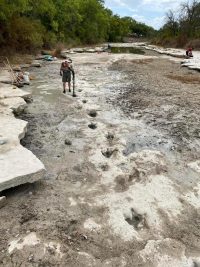More than 40 years after American climatologist Wallace Smith Broecker first predicted in 1975 that “rising levels of carbon dioxide in the atmosphere would lead to significant global warming,” we’re finally starting to see it firsthand, Climate warming is not some distant concept that scientists and environmental groups are clamoring for, but a life we are living through, and likely to live through for a long time to come.
According to the “State of the Global Climate 2020” released by the World Meteorological Organization, the current global average temperature is about 1.2°C higher than the pre-industrial level.
If we haven’t been this hot in the hundreds of years since the beginning of industrialization, it means that most of our countries and regions have social systems, lifestyles, and infrastructure built without taking extreme heat into account.
Year after year, more and more turbulent heat waves are likely to upend the daily life we know.
Earth is “burning”
Regardless of the extreme heat, sea level rise, drought, and food shortages that climate change may bring to human society in the next hundred years, all kinds of crises that may be caused to human society, we are already overwhelmed by the high temperature just now.
At least 1,700 people have died due to high temperatures in Europe’s originally warmer regions, such as Spain and Portugal. In countries with colder climates such as the United Kingdom, France, and Italy, the temperature has also begun to exceed the normal range in the past, according to the British Met Office. The first red warning for unusually high temperatures in the country’s history was issued, with 15 of France’s 96 departments listed as a “red” warning zone and 51 as an “orange” warning zone. At the same time, the high temperature and dryness have also triggered many forest fires in many European countries.
Heat can kill people, and the total number of deaths related to heat waves has been rising rapidly in recent years.
Couriers, riders, traffic police, sanitation workers, construction workers and other groups who have to work outdoors bear the brunt of the health risks brought about by high temperatures.
Being at home is not necessarily absolutely safe. There have been many cases of middle-aged and elderly people who were reluctant to turn on the air conditioner at home, and then were sent to the hospital due to high temperature and muggy conditions.
For groups directly affected by high temperature, we obviously need to strengthen relevant policies and legislation, and even adjust some of the work and lifestyle we are accustomed to to alleviate the health problems that may be caused by high temperature.
Appropriate working and living environment temperature must become an important consideration for the protection of personal rights and interests in the future.
We can’t expect everyone to hide indoors and blow air conditioners to cope with the high temperature, not to mention whether the electricity bills are affordable or the grid can’t support them.

Climate extremes may be the norm in the future
The extreme heat is accompanied by a systemic impact on all aspects of human society.
Even if people can endure or avoid the high temperature, the crops that people depend on for survival may not be able to endure.
The USDA forecast in May that the 2022 winter wheat harvest would be down 8 percent from a year earlier, despite a slight increase in plantings.
According to a report cited by Reuters, due to the worst extreme heat weather in 122 years, wheat exporter India is expected to reduce its wheat harvest this year by 6%.
The European Commission forecasts that this year’s total cereal crop, which includes wheat, barley and maize, will be 2.5 percent lower than last year due to dry weather.
The infrastructure is also starting to feel uncomfortable in the new climatic conditions.
Mariam Zachariah, a climate scientist at Imperial College London, points out that buildings in many European countries are designed to be insulated against the cold, making it difficult to withstand the heat they encounter today.
The runway at the British airport has melted due to the high temperature, causing flight delays, and the railway track may be deformed due to the high temperature. The railway department has to limit the speed of the train.
Since the development of large-scale urbanization, when we plan and construct cities and related infrastructure, we often seldom take into account the relationship between architectural design, planned location, materials, etc. and local regional climates. For example, when planning and building high-rise buildings to block the ventilation corridors Road, hindering the flow of monsoon, residents will inevitably feel more stuffy; for example, the glass curtain wall commonly used in high-rise office buildings, the reflection of sunlight further aggravates the already serious high temperature problem.
Extreme heat is just one of the manifestations of the power of climate change, which also means the emergence or increase of other extreme weather.
A report released by the World Meteorological Organization last year pointed out that the number of disasters related to weather, climate or flooding has increased fivefold in the past 50 years due to climate change and an increase in extreme weather.
Taking my country as an example, there will be a strong cold wave at the beginning of 2021, a sandstorm in the north in March, extreme thunderstorms and strong winds in Nantong, Jiangsu from April to May, a magnitude 17 tornado in Caidian in Wuhan in May, and extreme rainstorms in Zhengzhou in July, followed by Hubei in August. The county suffered heavy rainstorms, and by the end of the year, there were several cold waves with a cooling rate that exceeded the historical extreme…
These unusual and extreme climates have caused huge economic and even human losses, and in the future, this is likely to be the norm.
This obviously poses serious challenges to our existing level of infrastructure, social management and disaster prevention and control.
believe in humans
In terms of the current level and possible progress of the global response to climate change, we have to consider the worst outcome and prepare as soon as possible, because the situation is not optimistic.
Under the Paris Agreement, adopted in 2015, countries have developed detailed plans, known as Nationally Determined Contributions (NDCs), to reduce harmful greenhouse gas emissions.
my country’s “Carbon Peaking Action Plan before 2030” released in 2021 is a specific implementation and deployment based on relevant plans.
Assuming that the 194 parties to the Paris Agreement are all very credible and implement their plans without compromise, global temperatures will still rise by 2.7°C this century.
According to a 2018 report jointly prepared by governments and thousands of scientists, if the adverse effects of rising temperatures are to be avoided, the increase in global temperature must be controlled within 1.5°C of pre-industrial levels.
If the temperature rises by 2.7°C, various ecological disasters will be inevitable.
As far as this result is concerned, it may not be possible to achieve it from the current situation, because it is not easy to do, and the overall adjustment of carbon emissions at the national level is tantamount to hurting human beings who have long been accustomed to using fossil energy.
What’s more, there are cases like the United States where the government repents when it says it reneges on the agreement. Although it later rejoined the agreement, some people started this way, and no one can guarantee that there will be no next one in the future.
The implementation of the Paris Agreement is also not very good, and UN Secretary-General Guterres believes that the world has “off track to achieve the goals required by the Paris Agreement”.
Of course, there is no need for us to lose confidence and “lie down” on the spot.
In history, every time human beings encountered a crisis, they always showed great resilience and extraordinary wisdom. For climate change, we are bound to find a way to deal with it.
The solution may appear inadvertently. At the beginning of the 20th century, London, New York and other big cities that used horse-drawn carriages were plagued by a large amount of horse manure that was difficult to handle. At that time, the media had predicted that by the 1930s, London would be buried by piles of horse manure.
However, in the 1930s, “horse dung buried in the city” did not appear, because oil-burning cars became the main commuting tool in the city, and horse-drawn carriages were nowhere to be seen.
Sometimes a solution has emerged or is about to hatch, but we just don’t know it’s the solution yet.
This is not blind optimism, but a basic judgment on the self-rescue ability of a species that has survived and reproduced on earth for hundreds of thousands of years.
At the same time, we must also believe in the power of accumulation. From everyone making less garbage to the continuous efforts of national governments, institutions and scientific researchers, we are all approaching the answer to the climate problem step by step.




GIPHY App Key not set. Please check settings